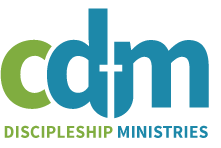MEMORIZE THIS STATEMENT: God has not given us more things to do in a day than He has given us the time to get it done.
I served as Academic Dean at a Bible college in South Africa. I told the students at the beginning of each year if they felt a teacher was giving them more to do than was expected they could come to me to complain. The only provision was that I would ask them to show me proof for how they spent their time during the week. In nine years I heard much grumbling, but not one student ever came to me with their accusation. This either meant that no teacher was giving too much work (which I don’t believe), or the struggling students were not using their time well. Which do you think was the case?
Time is the most precious commodity God has given to us, and it is not renewable! Once it is gone you can never make up for lost time. No one has more, or less, time than you do. You have 1440 minutes per day and 168 hours each week in which to offer faithful service. Even Jesus had the same amount of hours in His day, but think about the ways He invested that time. Peter said to grow in the grace and knowledge of our Lord and Savior Jesus Christ (2 Pet. 3:18). Growth takes place over time. Your personal growth, or lack of it, is dependent upon the best use of your time. Time will not wait for you; it will simply pass you by.
We will be held accountable for the way we use our time. Paul says, Make the best possible use of your time (Col. 4:5, Phillips’ paraphrase), and, Look carefully then how you walk, not as unwise but as wise, making the most of the time, because the days are evil (Eph.5:15). Jesus tells us, We need to be energetically at work for the One who sent me here, working while the sun shines. When night falls, the workday is over (John 9:4, The Message). God promised to supply our every need: Is time not one?
Sermons are often preached on the stewardship of wealth and possessions. Far fewer sermons are heard that hold us accountable for the use of our talents. Fewer still, if any, are ever heard concerning the stewardship of our time.
Where do you begin?
Set Goals -Decide what you want to accomplish. Or better, what God wants you to accomplish.
Prioritize – Take your list of goals and order them according to importance.
Plan – Develop strategies for how you will reach each goal.
Schedule -Set a date by which you will check your progress. Also set a date by which you hope to fulfill each goal.
Set a goal to set your goals – The most effective leaders set aside time at least weekly to lay out what they want to accomplish that week. One thing they have in common is the confirmed belief that the more time they spend planning, the less time they have to spend implementing. They argue that it is 90% inspiration and 10% perspiration. It may sound strange, but once you try it you too will become a believer.
Tithe – We often hear about tithing our money, but have you ever realized that we should also tithe our time? There are 168 hours each week. Do you give God at least 10% of your time?
If we agree that all good things are from God, and that He never asks us to do more than He has given the time to get it done, then time management is really managing His time!
God’s sixth commandment could read, “Thou shalt not kill time.”

 One of the hardest things I had to do as academic dean in a seminary in South Africa was to educate the faculty to understand the different between a “content driven curriculum” and a “process oriented curriculum.”
One of the hardest things I had to do as academic dean in a seminary in South Africa was to educate the faculty to understand the different between a “content driven curriculum” and a “process oriented curriculum.”